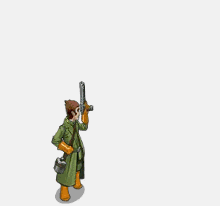

While many heroes & villains are encountered throughout the campaign, the leaders get the most spotlight. The story is good enough to keep you playing, but the voice actors tend to overdo it, especially with the Asian accents.įour characters represent each of the main clans. Contrary to Command & Conquer, these cutscenes are made with the game engine, which haven’t aged very well. Voiced cutscenes introduce and conclude every mission, and many characters will join you or fight you. Of course, the backstory is pretty important and the murder of Lord Oja, the disappearance of the Dragon Orb and The Horde itself will play an important part.Īs one can guess, Battle Realms relies heavily on story. The only thing that doesn’t change is the pitch of the game – you will need to fight the other clans in order to assure supremacy over the land.

For example, the obvious traitor will not have the same identity. The faction, the allies and the story will end up being completely different. On the other hand, if he decides to murder them, Kenji will become the de facto leader of the wicked Serpent Clan.

If Kenji saves the peasants, he will end up restoring the Dragon Clan. The game starts with one simple but important choice, where he finds peasants are being harassed by Serpent Clan raiders. The death of his father, Lord Oja, left other clans and minor warlords tearing apart the once glorious lands of his people. After a few generations, Grayback, the leader of the Wolf Clan, sparked a revolution and freed his people.Ĭoming back from an eight-year long exile for an unproven parricide, Kenji, heir to the Serpent Clan, discovers his lands are in great turmoil. Indeed, the Serpent had made a secret pact with the Lotus, allowing the latter to enslave the Wolf Clan and make them toil in their mines. The Lotus and the Serpent Clans welcomed them, sharing their lands with the refugees… or so it seemed. Praying to their relic, the wolves were also teleported to the former Dragon Clan lands. Fortunately, the nature-loving people had their own god, the white wolf, which also gave an artifact to his own: the white wolf skull. While safe from the Horde, the Wolf Clan was harassed by storms unleashed the Dragon God, infuriated by the disappearance of his own clan. With their home destroyed, they rebuilt their tribe on the former lands of the Dragon Clan. To survive, the clan followed a forbidden magic path, gaining tremendous powers in the process. Living peacefully on an island, the Lotus Clan was almost decimated by remnants of the horde. The two other clans also had to pay for Tarrant’s choice. The continent was shattered in two and the now-scattered Dragon Clan lost its integrity, becoming the shadow of its former self, now known as the Serpent Clan. While successful in repelling the horde, there were dire consequences. The orb was a gift from the Dragon God himself, and held tremendous power. Tarrant the elder, lord of the Dragon Clan, used his most sacred treasure, smartly called “The Dragon Orb”, to destroy the shadow race. A very long time ago, an unstoppable monstrous race called “The Horde” threatened to destroy the realm of Man. While not as deep as Myth: The Fallen Lords, Battle Realms still heavily relies on an unusual setting. Shockingly enough, the brand new studio’s first game was an RTS. A bit disappointed by the situation at Origin, he ended up creating his own studio in 1999, Liquid Entertainment. His resume also includes working on Alpha Centauriat Firaxis and later (trying) to save Ultima IX in a year. A few years later, he became the 42nd employee of Westwood Studios and a producer inside the studio. He entered the industry by working on Siege (Mindcraft, 1991, IBM), a strategy game in real time elements, which came out a few months before the classic Dune II. A member of the industry whose had extensive experience with RTS games, he had started working on them before the label itself was coined. So let’s talk about Ed Del Castillo for a bit.


 0 kommentar(er)
0 kommentar(er)
